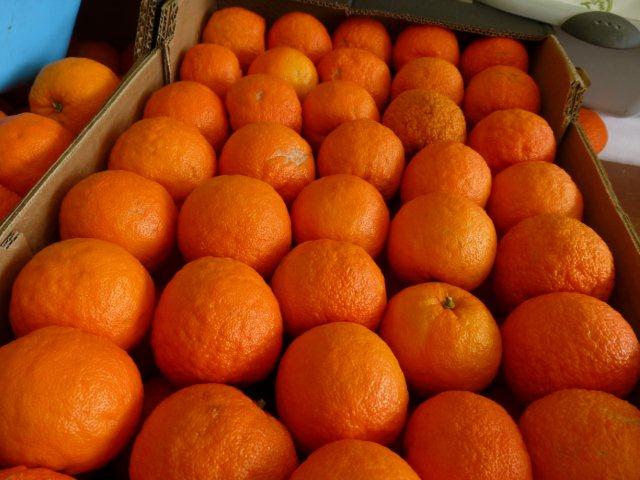The Kaffir orange, commonly known as the kaffir lime or Citrus hystrix, is a distinctive citrus fruit native to tropical Southeast Asia. Recognizable by its small, bumpy-skinned fruit and intensely aromatic leaves, the kaffir lime has long been treasured for culinary, medicinal, and ornamental uses. This article explores the origin, global significance, health benefits, and ultimately answers the important question: Which country is the largest kaffir orange (kaffir lime) producer in the world?
What Is Kaffir Orange (Kaffir Lime)?

The kaffir orange is a shrub-like tree, typically growing up to 5 meters in height. Its fruit is small, dark green, and has a rough, wrinkled rind. Though the juice of the fruit is minimal and extremely tart, the peel and leaves are highly prized in various Asian cuisines.
Kaffir lime leaves are known for their double-lobed shape and intense citrusy fragrance, playing a pivotal role in flavoring soups, curries, and stir-fries.
Historical and Cultural Significance
The kaffir lime tree is believed to have originated in Indonesia, Malaysia, and surrounding Southeast Asian regions. It has been an integral part of traditional cooking, herbal medicine, and spiritual rituals for centuries.
In Thai, Indonesian, Cambodian, and Lao cuisines, kaffir lime leaves are indispensable ingredients in iconic dishes like Tom Yum soup and green curry paste.
The Largest Kaffir Orange (Kaffir Lime) Producer in the World: Thailand

Thailand is the largest producer of kaffir orange (kaffir lime) in the world.
Why Thailand Leads in Kaffir Lime Production
1. Optimal Tropical Climate:
Thailand’s warm, humid, and tropical environment is ideal for kaffir lime cultivation.
2. Deep Culinary Integration:
Kaffir lime is a staple in Thai cuisine, used in soups, salads, curries, and beverages, which ensures high domestic demand and extensive farming.
3. Herbal Medicine and Traditional Use:
Widely used in traditional Thai medicine and religious ceremonies, kaffir lime leaves and fruits are believed to have purifying and protective properties.
4. Export Market Leadership:
Thailand exports fresh kaffir lime leaves, essential oils, and dried fruit to global markets in Europe, North America, and other parts of Asia.
Other Major Kaffir Lime Producing Countries
While Thailand dominates, several other countries actively cultivate kaffir lime:
Indonesia:
As a native species, Indonesia grows kaffir lime widely for culinary and medicinal use.
Malaysia:
Common in home gardens and commercial orchards, primarily for local consumption.
Vietnam:
Uses the leaves and rind in traditional recipes and herbal remedies.
India:
Grown in southern and northeastern regions for regional cuisines and Ayurvedic medicine.
Sri Lanka:
Valued for both culinary and religious purposes.
Nutritional and Medicinal Benefits

Kaffir lime offers numerous health and wellness benefits:
- Rich in Antioxidants: Protects against free radicals and oxidative stress.
- Boosts Digestive Health: Used traditionally to relieve indigestion, bloating, and nausea.
- Anti-Inflammatory and Antimicrobial Properties: Helpful in treating skin infections and minor wounds.
- Natural Stress Reliever: Essential oils derived from the rind and leaves are used in aromatherapy.
- Dental and Hair Care: Traditionally used in natural shampoos, hair tonics, and oral rinses.
Culinary and Commercial Uses
- Soups and Curries: Kaffir lime leaves impart a signature citrus aroma to Southeast Asian dishes.
- Chutneys and Pickles: The fruit is sometimes preserved in brine or sugar.
- Essential Oils: Used in perfumes, cleaning products, and aromatherapy.
- Herbal Medicines: Incorporated into natural remedies for colds, fevers, and digestive issues.
- Cosmetic Products: Included in shampoos, soaps, and skin creams for its antibacterial properties.
Economic Importance in Thailand

Kaffir lime farming contributes to Thailand’s agricultural and export economy:
- Employment Opportunities: Provides income for smallholder farmers and herbal product manufacturers.
- Export Revenue: Significant supplier of kaffir lime products to international markets.
- Tourism Connection: Traditional Thai cooking classes and herbal spas introduce visitors to kaffir lime’s cultural significance.
Challenges in Kaffir Lime Production
- Pest Susceptibility: Vulnerable to citrus pests like aphids and citrus canker.
- Climate Change Impact: Altered rainfall patterns and rising temperatures can affect yields.
- Market Limitations: Fresh leaves and fruit have a short shelf life, limiting export options.
Future Prospects and Global Trends

The global market for kaffir lime is expanding due to:
- Growing Demand for Authentic Asian Cuisine: As international interest in Thai and Southeast Asian cooking increases.
- Natural Health and Wellness Trends: Rising demand for herbal and aromatherapy products.
- Organic Farming Initiatives: Movement towards sustainable, pesticide-free farming practices.
- Product Innovation: Incorporation into teas, cosmetics, natural cleaning agents, and gourmet dishes.
Conclusion
Thailand’s ideal tropical environment, deep-rooted culinary traditions, and flourishing export market make it the largest producer of kaffir orange (kaffir lime) in the world. From bustling street food markets to high-end wellness spas, kaffir lime leaves and fruits play an essential role in Thai culture and commerce.
While neighboring countries like Indonesia, Malaysia, and Vietnam maintain their cultivation practices, none rival Thailand’s scale, quality, or influence in the global kaffir lime industry. As international appreciation for authentic Southeast Asian flavors and natural remedies continues to grow, Thailand’s kaffir lime production is poised for a thriving future.





